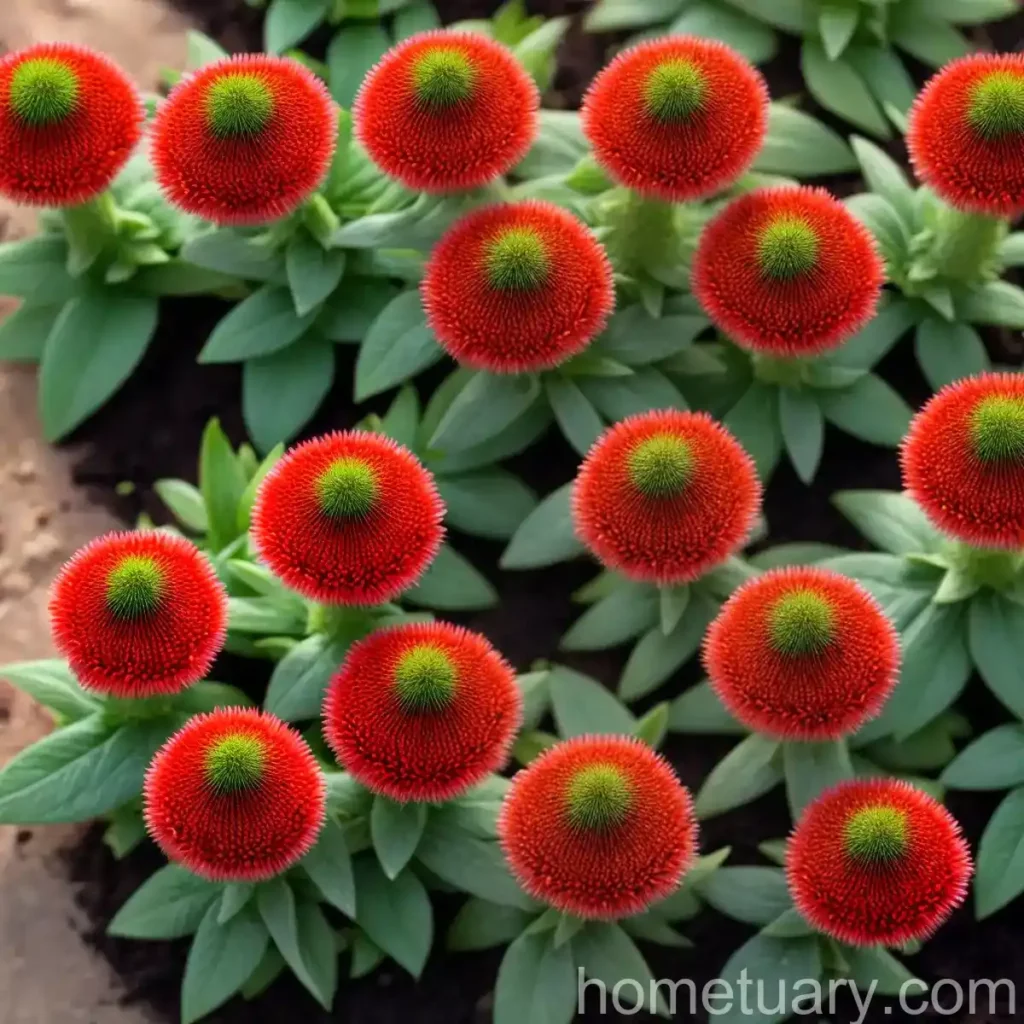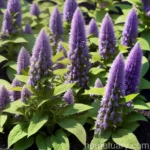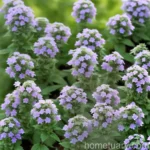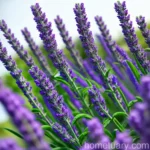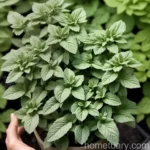Scarlet Monardella (Monardella macrantha ‘Marian Sampson’)
Scarlet Monardella, scientifically known as Monardella macrantha ‘Marian Sampson’, is a stunning flowering plant that has gained popularity among gardeners and landscapers. This plant is celebrated for its vibrant scarlet-red blooms and its ability to attract pollinators, making it a valuable addition to any garden or landscape. In this blog post, we will delve into the various aspects of Scarlet Monardella, including its cultural requirements, uses, maintenance, and fun facts. By the end of this article, you will have a comprehensive understanding of this beautiful plant and how to care for it in your own garden.
Key Takeaways – Scarlet Monardella (Monardella macrantha ‘Marian Sampson’)
Before we explore the intricate details of Scarlet Monardella, let’s take a glance at the key takeaways that will be covered in this blog post:
- Plant Name: Scarlet Monardella (Monardella macrantha ‘Marian Sampson’)
- Culture: Understanding the cultural requirements for the optimal growth of Scarlet Monardella.
- Uses: Exploring the practical and aesthetic uses of this plant.
- Water: Discussing the water requirements for Scarlet Monardella.
- Sunlight: Understanding the sunlight preferences of this plant.
- Fertilizer: Exploring the fertilizer needs for promoting healthy growth.
- Soil: Understanding the soil requirements for Scarlet Monardella.
- Pruning: Discovering the pruning techniques to maintain the plant’s shape and vigor.
- Propagation: Exploring the methods for propagating Scarlet Monardella.
- Container Popularity: Evaluating its suitability for container gardening.
- Common Diseases: Identifying potential diseases that may affect Scarlet Monardella.
- Common Pests: Understanding the common pests that can infest this plant.
- Botanist’s Tips: Insights and tips from experts for growing Scarlet Monardella successfully.
- Fun Facts: Uncovering interesting and lesser-known facts about this plant.
- Links to External Resources: Providing additional resources for further exploration of Scarlet Monardella.
Now, let’s begin our journey into the world of Scarlet Monardella and gain a deeper understanding of this remarkable plant.
What is Scarlet Monardella (Monardella macrantha ‘Marian Sampson’)?
Scarlet Monardella, formally known as Monardella macrantha ‘Marian Sampson’, is a perennial herbaceous plant that belongs to the mint family, Lamiaceae. This cultivar is specifically cherished for its vivid scarlet-red flowers that bloom throughout the summer, attracting a plethora of pollinators such as butterflies, bees, and hummingbirds.
The ‘Marian Sampson’ variety of Monardella macrantha is known for its compact and mounding growth habit, making it an excellent choice for edging garden beds, rock gardens, or containers. The fragrant foliage and brilliant blooms make it a standout addition to any garden landscape, adding a pop of color and inviting beneficial wildlife.
Plant Characteristics
To gain a comprehensive understanding of Scarlet Monardella, let’s delve into its characteristics:
- Scientific Name: Monardella macrantha ‘Marian Sampson’
- Common Name: Scarlet Monardella
- Plant Type: Perennial
- Bloom Time: Summer
- Bloom Color: Scarlet-red
- Foliage: Fragrant, dark green
- Mature Size: 6-12 inches tall and 12-18 inches wide
- Growth Habit: Compact, mounding
- Attracts: Butterflies, bees, hummingbirds
Now that we have familiarized ourselves with the key characteristics of Scarlet Monardella, let’s explore its cultural requirements to ensure its optimal growth and vitality.
Culture of Scarlet Monardella
Cultural requirements play a pivotal role in the successful cultivation of any plant. Understanding the specific needs of Scarlet Monardella will enable you to provide the best possible growing conditions for this captivating plant. Let’s explore the cultural aspects of Scarlet Monardella, including its water, sunlight, fertilizer, and soil preferences.
Water
Proper watering is essential for the health and vigor of Scarlet Monardella. While this plant is appreciated for its showy blooms, it generally thrives in well-drained soils and is relatively drought-tolerant once established. However, during the active growing season and especially in periods of prolonged drought, regular watering is essential to promote robust growth and prolific flowering.
Watering Guidelines:
– Established Plants: Water deeply but infrequently, allowing the soil to dry out slightly between waterings.
– Potted Plants: Ensure adequate drainage in containers and water when the top inch of soil is dry.
Sunlight
Scarlet Monardella thrives in bright sunlight and is well-suited for gardens or landscapes that receive full sun to partial shade. When provided with ample sunlight, this plant will produce an abundance of vibrant flowers, enhancing the visual appeal of the outdoor space. In regions with intense heat, some afternoon shade can be beneficial to prevent foliage from becoming stressed or scorched.
Sunlight Preferences:
– Full Sun: Optimal for prolific flowering and overall plant vigor.
– Partial Shade: Suitable in regions with intense heat or during periods of extreme summer weather.
Fertilizer
Fertilization can significantly impact the growth and flowering performance of Scarlet Monardella. While this plant is relatively low-maintenance, the occasional application of a balanced fertilizer can encourage healthy growth and promote abundant blooms. Ideally, a slow-release fertilizer formulated for flowering perennials can be applied in the early spring to provide essential nutrients for the growing season.
Fertilizer Recommendations:
– Balanced Formula: Select a fertilizer with an equal N-P-K ratio to support overall plant health and flower production.
– Application: Apply according to the manufacturer’s instructions, typically in the early spring before new growth appears.
Soil
The soil composition and structure play a critical role in the overall health and vitality of Scarlet Monardella. This plant thrives in well-drained, loamy soils that provide good aeration and moisture retention. Additionally, a slightly acidic to neutral soil pH range is ideal for promoting robust growth and ensuring that the plant can effectively access essential nutrients.
Soil Requirements:
– Drainage: Ensure well-drained soil to prevent waterlogging, especially in regions with heavy rainfall.
– pH Range: Neutral to slightly acidic soil pH (6.0-7.0) is generally favorable for Scarlet Monardella.
By understanding and addressing the specific cultural requirements of Scarlet Monardella, you can create an environment that fosters its growth and showcases its captivating beauty. With these guidelines in mind, you can now explore the practical and aesthetic uses of this delightful plant.
Uses of Scarlet Monardella
Scarlet Monardella offers a range of practical and aesthetic uses, making it a versatile addition to various outdoor settings. Whether planted in garden beds, rock gardens, or containers, Scarlet Monardella contributes to the overall charm and biodiversity of the landscape. Let’s explore some of the primary uses of this captivating plant:
-
Pollinator Gardens: Scarlet Monardella’s nectar-rich flowers serve as a valuable food source for pollinators, making it an excellent addition to pollinator-friendly gardens and landscapes aimed at supporting biodiversity.
-
Edging Plant: The compact growth habit and vibrant blooms make Scarlet Monardella well-suited for edging garden beds, border plantings, or along walkways, adding a splash of color and visual interest.
-
Rock Gardens: The low-growing and mounding nature of Scarlet Monardella makes it an ideal choice for rock gardens, where it can cascade over rocks and fill in gaps with its attractive foliage and flowers.
-
Container Gardening: Whether grown in decorative pots or mixed containers, Scarlet Monardella can serve as a striking focal point, adding a burst of color to patios, balconies, or outdoor entertaining areas.
-
Wildlife Gardens: By attracting butterflies, bees, and hummingbirds, Scarlet Monardella contributes to the ecological balance of the outdoor environment and supports beneficial wildlife.
Now that we have explored the wonderful uses of Scarlet Monardella, we will delve into the essential maintenance practices, including pruning, propagation, and container gardening.
Maintenance of Scarlet Monardella
To ensure that Scarlet Monardella thrives and continues to dazzle with its vibrant blooms, certain maintenance practices such as pruning and propagation may be necessary. Additionally, for gardeners with limited outdoor space, understanding its compatibility with container gardening can be valuable. Let’s explore these maintenance aspects in detail.
Pruning
Pruning plays a crucial role in maintaining the shape, density, and flowering potential of Scarlet Monardella. By removing spent blooms and periodically shaping the plant, you can promote a neat and compact growth habit while encouraging the production of new flowers. Additionally, regular deadheading can prolong the flowering period and prevent self-seeding in the garden.
Pruning Guidelines:
– Deadheading: Remove spent flowers to encourage continued blooming.
– Annual Pruning: Prune back in early spring to promote new growth and maintain a tidy appearance.
Propagation
For those interested in expanding their collection of Scarlet Monardella or sharing this delightful plant with others, propagation techniques such as division and stem cuttings can be employed. Propagation allows you to create new plants from existing stock, ensuring the longevity and proliferation of this captivating cultivar.
Propagation Methods:
– Division: Divide mature clumps in early spring to create new plants with established root systems.
– Stem Cuttings: Take softwood cuttings in the spring and propagate them in a suitable growing medium to establish new plants.
Container Popularity
Scarlet Monardella can thrive in containers, making it a versatile choice for gardeners with limited space or those aiming to create eye-catching displays on patios, balconies, or outdoor living areas. When grown in containers, it’s essential to consider the soil, sunlight, watering, and fertilization needs to ensure the plant’s health and vigor.
Container Gardening Tips:
– Well-Drained Soil: Use a high-quality potting mix with good drainage properties.
– Sunlight: Place containers in a location that receives ample sunlight, ensuring optimal growing conditions.
By implementing these maintenance practices and considerations, you can effectively care for Scarlet Monardella, allowing it to thrive and delight with its stunning scarlet-red blooms. While this plant offers a wide array of benefits and uses, it is essential to be mindful of potential diseases and pests that may affect its overall health and vitality.
Common Diseases and Pests
As with any plant, Scarlet Monardella is susceptible to certain diseases and pests that can impact its growth and appearance. By understanding the signs of common diseases and identifying potential pests, you can take proactive measures to safeguard the health of this captivating plant. Let’s explore some common diseases and pests associated with Scarlet Monardella.
Disease Diagnosis
While Scarlet Monardella is generally resilient, certain environmental conditions and pathogens can lead to specific diseases that may affect its overall health. Recognizing the symptoms of common diseases is essential for implementing targeted treatments and prevention strategies.
Common Diseases:
1. Powdery Mildew: A fungal infection characterized by a powdery white growth on the leaves, typically occurring in humid or poorly ventilated conditions.
2. Root Rots: Excessive soil moisture or poor drainage can lead to root rot, causing wilting, yellowing foliage, and stunted growth.
Common Pests
In addition to diseases, Scarlet Monardella may also be susceptible to infestations by certain pests. By being vigilant and monitoring the plant for signs of pest activity, you can take prompt action to mitigate potential damage and protect the plant from infestations.
Common Pests:
1. Aphids: Small, sap-sucking insects that can cause distorted growth and yellowing of leaves.
2. Spider Mites: These tiny pests can cause stippling and webbing on the foliage, impacting the overall vigor of the plant.
By remaining attentive to the signs of potential diseases and pests, you can effectively address any issues that may arise, ensuring the continued health and vitality of Scarlet Monardella in your garden or landscape. In addition to these maintenance practices, there are several expert tips and fun facts related to this captivating plant that are worth exploring.
Botanist’s Tips and Fun Facts
Botanist’s Tips for Growing Scarlet Monardella
As a plant scientist specializing in botanical studies, I have compiled a range of expert tips to help you achieve successful growth and cultivation of Scarlet Monardella in your outdoor space. These insights are based on extensive research and practical experience with this remarkable plant.
Expert Tips:
1. Soil Preparation: Prior to planting, amend the soil with organic matter to improve drainage and fertility, creating an optimal growing environment for Scarlet Monardella.
2. Mulching: Apply a layer of organic mulch around the base of the plant to conserve moisture, suppress weeds, and insulate the root zone.
3. Beneficial Companions: Consider planting Scarlet Monardella alongside other pollinator-friendly plants to create a vibrant and biodiverse garden setting.
4. Regular Monitoring: Routinely inspect the plant for signs of pests, diseases, or nutrient deficiencies, intervening as needed to maintain its overall health and vigor.
Fun Facts About Scarlet Monardella
Uncover some intriguing and lesser-known facts about Scarlet Monardella, shedding light on its unique characteristics and ecological significance:
- The scarlet-red flowers of Monardella macrantha ‘Marian Sampson’ are a magnet for hummingbirds, creating an enchanting spectacle in gardens and wildlife habitats.
- In its natural habitat, Scarlet Monardella is often found in rocky or mountainous regions, showcasing its adaptability to challenging growing conditions.
- The aromatic foliage of Scarlet Monardella emits a pleasant fragrance, adding to its appeal as a sensory plant in garden landscapes.
- The nectar-rich flowers of Scarlet Monardella not only attract pollinators but also serve as a valuable food source for many beneficial insects, contributing to the ecological balance of the outdoor environment.
By incorporating these botanist’s tips and fun facts into your understanding of Scarlet Monardella, you can further appreciate the significance and beauty of this remarkable plant. While the information provided in this blog post serves as a comprehensive guide, it is also valuable to explore external resources for further insights and in-depth knowledge on this captivating cultivar.
Links to External Resources
To expand your understanding of Scarlet Monardella and gather additional resources for its successful cultivation, I recommend exploring the following external references:
- Royal Horticultural Society – Monardella macrantha ‘Marian Sampson’
- University of California – Monardella macrantha ‘Marian Sampson’
- Missouri Botanical Garden – Monardella macrantha ‘Marian Sampson’
- American Horticultural Society – Monardella macrantha Cultivar Overview
By consulting these external resources, you can access comprehensive botanical descriptions, cultivation guidelines, and practical insights into the propagation, maintenance, and ecological significance of Scarlet Monardella within garden landscapes.
In conclusion, Scarlet Monardella (Monardella macrantha ‘Marian Sampson’) is a captivating and valuable plant that offers an array of ornamental and ecological benefits. By understanding its cultural requirements, practical uses, maintenance practices, and unique characteristics, you can cultivate and appreciate this delightful cultivar in your own garden or landscape. Whether adorned with scarlet-red flowers in a garden bed or showcased in a decorative container, Scarlet Monardella is sure to captivate with its vibrant blooms and ecological contributions.
As a plant scientist, I encourage you to explore the captivating world of Scarlet Monardella, leveraging the insights provided in this blog post and external resources to further enrich your knowledge and appreciation of this remarkable flowering plant.
Remember to share your experiences, insights, and photos of Scarlet Monardella as you embark on your journey of cultivating this enchanting species in your outdoor spaces. Happy gardening!

Image Source: Pixabay

